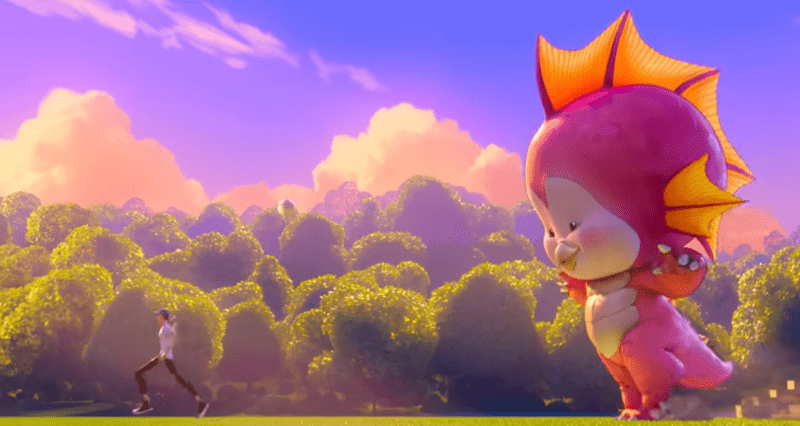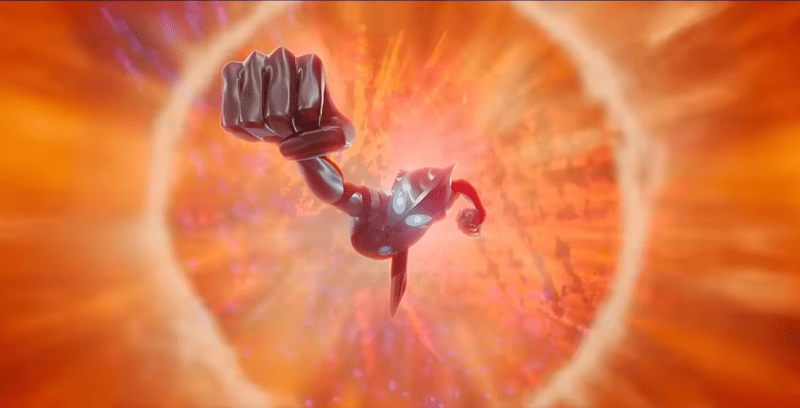Ultraman Rising aired on Netflix on July 14th during this Father’s Day weekend. After watching the film, it made me want to explore previous Ultraman series that have a “beyond superhero” plotline. Yet, Tsubaraya Productions could not have made this Netflix film work without the help of director Shannon Tindle and writer John Aoshima.
Japanese Ultraman fans were shocked to see two foreigners on stage at the 2021 Tsubaraya Convention Special Program. Tindle and Aoshima introduced their film’s premise as that of a young Ultraman who adopts a kaiju newborn and learns how to reconnect with his father after 20 years away from him. Here’s why you should watch Ultraman Rising next Father’s Day.
The Ultra Journey Part I
Shannon Tindle began his superhero kaiju family project in 2001 during his transfer from Kids WB to Cartoon Network in the 2000s. He’s a character designer on shows such as Samurai Jack, Static Shock, and Foster’s Home For Imaginary Friends.
When he wrote and drew the concept for Ultraman Rising, Tindle thought about his relationship with his father when they watched Ultraman and Battle of the Planets (Gatchaman in Japan) on Saturday afternoons in their Kentucky home. Tindle called the project Made in Japan as it featured a Japanese superhero inspired by Ultraman who adopts a baby kaiju.
Tindle’s parenthood inspired Kenji Sato’s chaotic life to find the balance between heroism, baseball stardom, and raising a kaiju. He was a growing parent during the beginning of his animation career, raising his daughter. She’s conveyed in the film as the kaiju infant, Emi.
The Ultra Journey Part II

John Aoshima is a Japanese native born in 1975, nine years after Ultraman made its first debut. According to a Scannain interview, Aoshima first discovered Ultraman in Akira Toriyama’s Dr. Slump. He would argue with his older brother about which Ultraman was the strongest.
When he moved to the United States, Aoshima completely forgot about the friendly kaiju fighter until he chose to study animation at CalArts, where he met Tindle. Their friendship blossomed through their love for the hero, staying in touch during their animation careers. Aoshima became a successful director and writer in shows ranging from Nickelodeon’s Avatar: The Last Airbender to Disney’s Ducktales (2016).
In Ultraman Rising, Aoshima uses his childhood to describe Kenji’s struggles with self-identification. Kenji became a US baseball star, then returned to Japan at his mother’s request. Due to Professor Sato’s injuries, he must become the next Ultraman.
Parental Love of Ultraman
There is no shortage of love in Ultraman Rising, and the same can be said for how much love Tindle, Aoshima, and Ultraman’s studio, Tsubaraya Productions, put into delicate care for the film to come out right. Using Japanese and American family values, I see how Tsubaraya Productions loves this idea of parental love.
The Sato Family
Kenji became so self-absorbed in his baseball fame that he never realized he was hurting himself and others around him until he began to raise Emi, the child of the movie’s main kaiju, Gigantron, an amphibious water dragon. She imprinted Kenji the moment she hatched from her egg after Gigantron was murdered by the Kaiju Defense Force (KDF).
Professor Sato assumed Kenji allowed the KDF to kill the last of its kind. Suddenly, he resents how it was hard to leave his home in America after his mother went missing and had no word from Professor Sato as he was busy protecting Japan as Ultraman for the past 20 years. Driving away the only kaiju expert, Kenji affected his life’s balance as he tried to juggle between baseball, protecting the city, and raising a kaiju.
At his lowest, he gave a call to the reporter, Ami Wakita, to see how she tries to find the balance between work and family life as she has a young daughter named Chiho. She responds, “It’s not easy, but you’d be amazed on how children can surprise you.” Kenji managed to find his first step into parenthood when he saw Emi try to mimic him playing baseball and began to teach her.
Later, Kenji reconciles with Professor Sato after he fixes her broken arm. Thanks to learning about parenthood, he created a balance with his father and put his teaching skills to use by training the Yomiuri Giants to become the best baseball team in Japan.
Dr. Onda of KDF
While Professor Sato protected his family from harm’s way, the villain of Ultraman Rising had a different route of parental love. Dr. Onda is the founder and leader of the KDF. Their mission is to destroy all kaiju from existence.
In the film, the audience learns the motive behind their mission: Dr. Onda wants vengeance on the Kaiju kind after they have destroyed his family during the Kaiju Purge. He carries a video of his wife and daughter’s last moment. While he seeks to capture and terminate Japan’s monstrous beasts, Onda refuses to endanger a human’s life.
In the same scene where the audience discovers his motive, his entrusted captain, Aoshima, enters the room. Dr. Onda informs him about Emi’s ability to echolocate, which could help their mission to find Kaiju Island. He noticed how hesitant Aoshima was, unsure if they could risk themselves or even destroy an entire ecosystem of kaiju. Dr. Onda knows Aoshima has a family with a young daughter and son. Knowing what chaos could bring the next day, the scientist asked him to go home and rest so he could spend another day with his children.
Ultraman Rising: My First Ultraman

I have a confession to make: Ultraman Rising is the first Ultraman media I have experienced in my life. For the past year, I have been learning about sentai heroes such as Kamen Rider and the Rangers that inspired Saban’s Power Rangers. When I told my sentai expert that Rising was my first Ultraman, they grew skeptical because he was afraid it would ruin my experience with the Ultraman series.
To me, the animation paved the movie’s theme well, and I understood what Tindle and Aoshima aimed for in creating a growing Ultraman. Having Tsubaraya Productions watch over these two Ultra fans could appeal to Japanese and American audiences, which is the best call Tindle made, as I believe it holds the spirit of what Ultraman can be. The entire film was made out of Tindle and Aoshima’s passion for their childhood hero. They even left a reference to their first film that they worked together on in the character Kubo, a fellow sports reporter who shares John Aoshima’s likeness and was designed by Tindle.
Before watching the film, I recognized Tindle’s style in the trailer for Laika’s Kubo and the Two Strings. What I didn’t know is that Aoshima was the lead story artist for the film. For their second film, they made me excited to explore Ultraman media of the past, present, and future. To Tindle and Aoshima, thank you for creating another cinematic masterpiece.
For More Great Content
Total Apex is an all-around media informer passionate about entertainment, gaming, sports, and anything your curiosity wants to seek. Follow our Sports, Entertainment, Gaming, Betting, and Fantasy Sports homepage for more articles. Find us on X @TotalApexE&G and @TotalApexSports!







